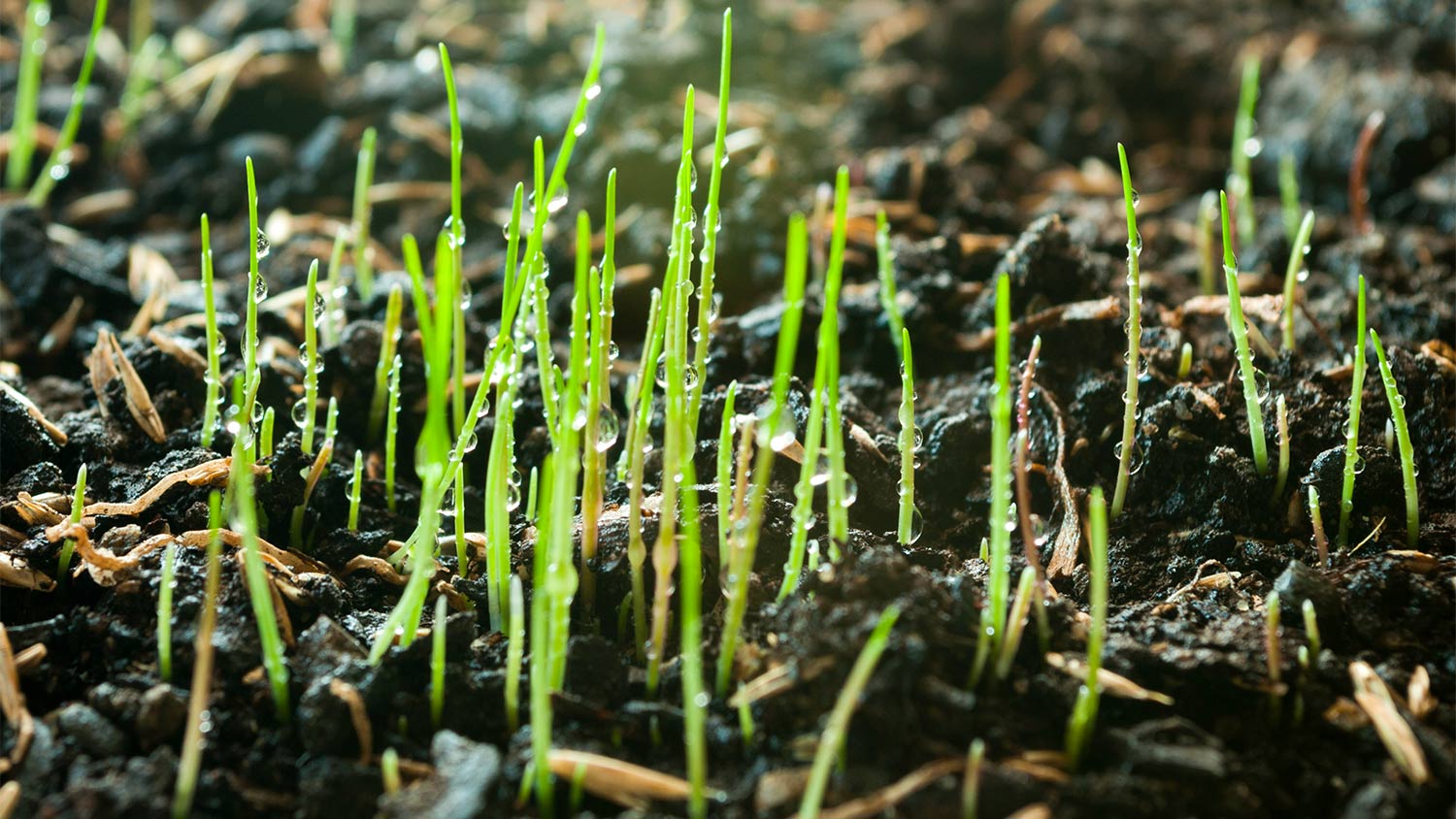
Removing an old lawn is often necessary to plant new grass or build a new outdoor structure. Find out what to budget for your lawn removal cost.
Keep your grass richly green with the right yearly watering schedule


During the main growing season, give 1 to 1½ inches of water per week.
Water twice per week and increase to three times during intense summer heat.
Water newly seeded lawns daily.
Water until the ground freezes in fall.
Watering the grass is only for the summer, right? Wrong! But how often should you water your lawn? As our guide explains, to keep your grass really healthy and to maintain a lush, green lawn, you need to add just the right amount of water through much of spring and fall, too.
As with most lawn care tasks, watering your grass isn't an exact science. It requires common sense, and there are many variables, too, such as your locale’s climate, your soil’s health and structure, and the type of grass you have.
Once mid-spring arrives and your lawn wakes up and starts growing, you'll need to provide around 1 to 1½ inches of water per week. Ideally, split this over two waterings throughout most of this period to penetrate deeply into the soil and encourage deep, strong root systems. This is more effective than watering just a little bit every day because the deeper the roots grow, the stronger and more drought-tolerant your lawn will be.
In the heat of summer, you may need to split this across three waterings per week and add an extra half-inch to account for the extra evaporation that occurs during extremely hot weather. Water at dawn or during the early evening to avoid the temperatures that are too hot to water grass.
Watering your lawn in early spring is only necessary during dry spells. Early spring in most areas is a notoriously wet time of year anyway, but you'll still encounter dry spells. If there's been no rainfall for a week or two, the ground isn't frozen, and it's starting to dry out, you may want to give your lawn a drink. Turn on your sprinkler system, provide around an inch of water to penetrate deep into the soil, and then monitor.
It may be that you only need to water your lawn once or twice during early spring. In fact, in most regions, you won't have to water at all during this period, as Mother Nature provides enough rain to satiate your grass. However, it's not uncommon for droughts to last well into spring. You can check whether your location is undergoing drought conditions by checking the U.S. drought monitor map from the University of Nebraska-Lincoln.
Keep watering your lawn well into fall and only stop when the ground freezes. Obviously, apply common sense. If it's been raining, don't water, as overwatering is just as harmful as underwatering and is one of the most common lawn care mistakes.

Newly seeded lawns require considerably more water than established ones. After seeding your lawn, keep the top inch of soil moist but not damp. You can do this by watering lightly early in the morning each day and even giving the area a second misting late in the day if it's drying out too fast.
After the seeds germinate, provide more water, keeping the top 2 inches of soil moist but not soaking. You can likely reduce watering to every other day at this point, but it depends on your climate and how much moisture your soil retains.
Keep to this lawn maintenance schedule until your grass reaches around 3 inches tall. At this point, it's mature enough to be mowed, and it's time to encourage strong roots by watering deeper but less frequently. Cut back watering to twice per week, but give more water each time, treating it as an established lawn. If you need help with the growing process, consider hiring a local lawn care service to walk you through each step to success.
While the general rule of thumb is the same regardless of what type of grass you have, there are differences between cool-season vs. warm-season grasses. Cool-season varieties require more water than warm-season ones. Warm-season grasses like Zoysia grass and Bermuda grass have deep root systems that make them drought-tolerant. These grasses will do well in all but the hottest, driest conditions with only an inch of water per week.
If you live in an area where cool-season grasses are needed, but you still experience periods of drought, tall fescue is the best option as it has the deepest root system and, therefore, the highest drought tolerance of all cool-season grasses.
From average costs to expert advice, get all the answers you need to get your job done.

Removing an old lawn is often necessary to plant new grass or build a new outdoor structure. Find out what to budget for your lawn removal cost.

The average lawn mowing cost runs between $50 and $200 depending on factors like your lawn’s size and shape. Here’s what to expect.

Your total lawn care cost depends on several factors, including the type of service and lawn size. Our guide will cover what you can expect to pay for lawn care.

Did you know that grass has two annual dormancy periods? When does grass stop growing and how and when should you shake up your weekly mowing schedule?

Pulling weeds by hand is an effective way to remove weeds, but you’ll want some tips and tricks up your sleeve to make regular weeding an easier chore.

How does your garden grow? With these nine tips for raised beds, they’re sure to be elevated—both in height and quality.